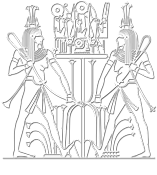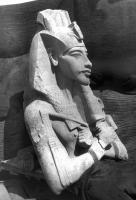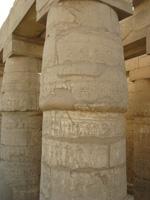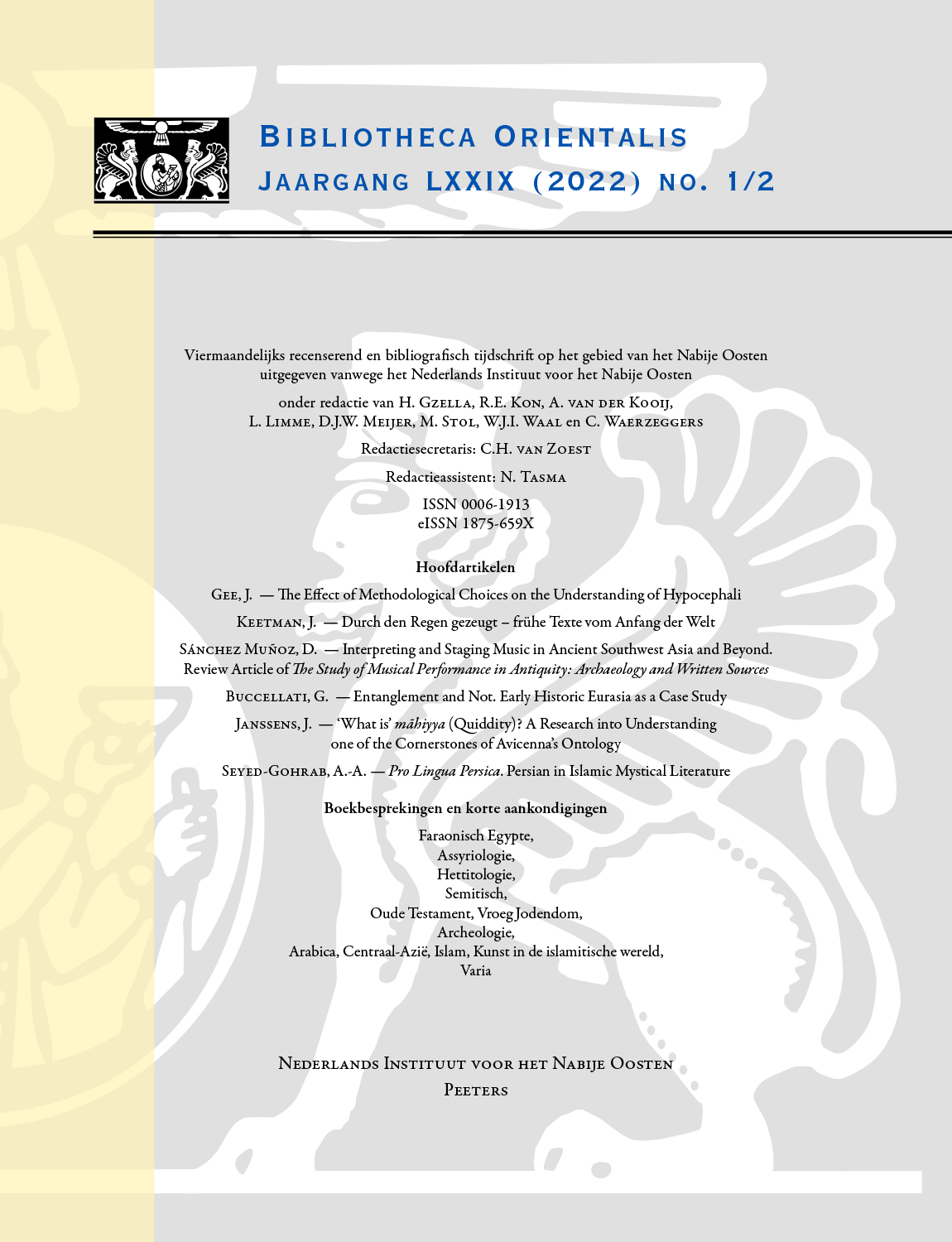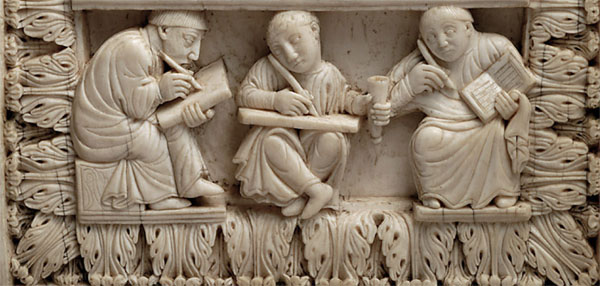| Citation |
|
|
|---|
| A |
|
|
| Abbadi, Mostafa El, The Edict of Tiberius Julius Alexander, Remarks on its Nature and Aim, BIFAO 65 (1965), p. 215-226 | Link to web page | Link to PDF file |
| Abbas, Mohamed Raafat, "A Survey of the Military Role of the Sherden Warriors in the Egyptian Army during the Ramesside Period" (ENiM 10, p. 7-23 — 12 mai 2017) | Link to web page | Link to PDF file |
| Abbas, Mohamed Raafat, "Historical Observations on the Military Role of Three Ramesside Viceroys of Kush" (ENiM 11, p. 33-40 — 22 février 2018) | Link to web page | Link to PDF file |
| Abbas, Mohamed Raafat, "The Bodyguard of Ramesses II and the Battle of Kadesh" (ENiM 9, p. 113-123 — 28 septembre 2016) | Link to web page | Link to PDF file |
| Abbas, Mohamed Raafat, "The Canaanite and Nubian Wars of Merenptah: Some Historical Notes" (ENiM 13, p. 133-149 — 11 mai 2020) | Link to web page | Link to PDF file |
| Abd El Aal, Sh., "Characterization and Examination of Pigments, Grounds and Media from Ancient Egyptian Cartonnage", Egyptian Journal of Archaeological and Restoration Studies 4, issue 1 (2014): 35-46 | Link to web page | Link to PDF file |
| Abd El Aal, Sh., "Evaluation of Biotechnology in the Conservation of wall paintings in the mortuary temple of ramses iii", Egyptian Journal of Archaeological and Restoration Studies 2, issue 2 (2012): 79-89 | Link to web page | Link to PDF file |
| Abd El-Hady, M. and A. Abd El Hafez, "Physio-chemical and mechanical deterioration of monumental mud brick in egypt", Egyptian Journal of Archaeological and Restoration Studies 2, issue 2 (2012): 103-107 | Link to web page | Link to PDF file |
| Abd El-Hamid, (S.), Desroches, (E.), Vergnieux, (R.), Aménagement et rénovation d’un ancien magasin archéologique de Karnak : le Cheikh Labib, Karnak 8, 1987, p. 369-379 | Link to web page | Link to PDF file |
| Abd El-Hamid, (S.), Discovery of a New Foundation Deposit of Thutmosis III at the East of Karnak. A Preliminary Report (With an Annex about a Stela of Pareemheb), Karnak 8, 1987, p. 41-50 | Link to web page | Link to PDF file |
| Abd El-Hamid, (S.), Golvin, (J.-Cl.), Goyon, (J.-Cl.), Les travaux du Centre Franco-Égyptien de 1981 à 1985. Rapport général, Karnak 8, 1987, p. 9-39 | Link to web page | Link to PDF file |
| Abd El-Hamid, (S.), Une nouvelle statue thébaine d’Aba, Karnak 7, 1982, p. 367-375 | Link to web page | Link to PDF file |
| Abd El-Tawab, N. and M. Askalany, "Study of durability of Alabaster used in the temples of Luxor and Karnak and laboratory evaluation of consolidation treatment", Egyptian Journal of Archaeological and Restoration Studies 1, issue 2 (2011): 15-32 | Link to web page | Link to PDF file |
| Abd El-Tawab, N., l. Badr, and A. Mahran, "Analytical Investigation of Cartonnage fragment from late period", Egyptian Journal of Archaeological and Restoration Studies 2, issue 2 (2012): 69-78 | Link to web page | Link to PDF file |
| Abd el-Wahab, Fahmy, La tombe de Sen-nedjem à Deir El Médineh: Croquis de position, Le Caire, 1959, pls. 34-38 – pdf file (5.1 MB) MIFAO 89 | Link to web page | Link to PDF file |
| Abdalaal, Aisha M., A Granite Statue Base of Ḥr-ỉr-ʿȝ (Cairo N 9107), BIFAO 110 (2010), p. 1-11 | Link to web page | Link to PDF file |
| Abdel Rahim, N., Analytical Study Of Archaeological Pottery Sarcophagus, Greco Roman Period, From Saqqara, Egypt, Egyptian Journal of Archaeological and Restoration Studies 5, issue 2 (2015): 79-86 | Link to web page | Link to PDF file |
| Abitz, Friedrich, Baugeschichte und Dekoration des Grabes Ramses' VI. (OBO 89) Freiburg, Switzerland / Göttingen, Germany: Universitätsverlag / Vandenhoeck & Ruprecht, 1989.- 196 pp. - pdf-file (3.7 MB) | Link to web page | Link to PDF file |
| Abitz, Friedrich, Pharao als Gott: in den Unterweltsbüchern des Neuen Reiches. Freiburg, Switzerland / Göttingen, Germany: Universitätsverlag / Vandenhoeck & Ruprecht | Link to web page | Link to PDF file |
| Abitz, Friedrich, Ramses III. in den Gräbern seiner Söhne. Freiburg, Switzerland / Göttingen, Germany: Universitätsverlag / Vandenhoeck & Ruprecht | Link to web page | Link to PDF file |
| Abou Zaid, O., El-Asfar, A., Ezz, A., El-Tayeb, A., Hassan, H., Fathi, O., Azab, M., Beabesh, M., Abd el-Wahab, M., Hassan, A., El-Amir, H. & Yousef, W., New Theban Tombs Mapping Project (NTTMP) Preliminary Report, Seasons 2014-2015, Egyptian Journal of Archaeological and Restoration Studies 5, issue 1 (2015): 71–77 | Link to web page | Link to PDF file |
| Abou-Ghazi, Dia’, Bewailing the King in the Pyramid Texts, BIFAO 66 (1966), p. 157-164 | Link to web page | Link to PDF file |
| Abou-Ghazi, Dia’, The First Appearance of Re’ and his Continuous Being as Depicted in the Pyramid Texts, BIFAO 68 (1968), p. 47-51 | Link to web page | Link to PDF file |
| Abou-Ghazi, Dia’, Two New Monuments inscribed in Hieroglyphics from Ptolemaic Egypt [with 1 photo-plate], BIFAO 66 (1966), p. 165-169 | Link to web page | Link to PDF file |
| Abramitis, Dorothy H. et al., "Appearance and Reality: Recent Studies in Conservation", The Metropolitan Museum of Art Bulletin 55.3 (Winter 1997–1998) | Link to web page | Link to PDF file |
| Abu Bakr, Abdel Moneim, Excavations at Giza 1949-1950 (Cairo: Government Press, 1953) |
| Link to PDF file |
| Abu-El-Nadar, W. "God Nepri in Ancient Egyptian Religion", Egyptian Journal of Archaeological and Restoration Studies 3, issue 2 (2013): 107-114 | Link to web page | Link to PDF file |
| Adam, (J.-P.), Pierrat-Bonnefois,, (G.), La chapelle de Thoutmosis III à Tôd, Karnak 11, 2003, p. 65-132 | Link to web page | Link to PDF file |
| Adams, Barbara, "Discovery of a predynastic elephant burial at Hierakonpolis, Egypt", Archaeology International 2 (1998): 46-50 | Link to web page | Link to PDF file |
| Adams, C.E.P. (2013) "Natural Resources in Roman Egypt: Extraction, Transport, and Administration", in: Bulletin of the American Society of Papyrologists, 50. 265 - 281. | Link to web page | Link to PDF file |
| Adams, William, Publication des poteries d’époques pharaonique, romaine et chrétienne, BIFAO 67 (1967), p. 213-227 | Link to web page | Link to PDF file |
| Adenstedt, Ingrid , Reconstructing Pharaonic Architecture in Nubia: The Case Study of SAV1, Sai Island. Denkschriften der Gesamtakademie, Band: 80. Contributions to the Archaeology of Egypt, Nubia and the Levant, Band: 3. Verlag der Österreichischen Akademie der Wissenschaften, 2016 | Link to web page |
|
| Adler, Katrin, “Tiere im kulturellen Gefüge afrikanischer Gesellschaften – eine Auswahl”, Tierkulte im pharaonischen Ägypten und im Kulturvergleich. IBAES IV (2003): 207-228 | Link to web page | Link to PDF file |
| Adlerburg, Nickolas T. Pappas, "Unwrapping the Past: A chemical analysis of context lacking artefacts from the Ptolemaic and Roman Egypt in correlation with the process of mummication", Independent thesis Basic level (degree of Bachelor), Uppsala University, 2013 |
| Link to PDF file |
| Aegyptiaca 3 (2018), Journal of the History of Reception of Ancient Egypt, has appeared online (for free): | Link to web page |
|
| AERAGRAM, the official newsletter of Ancient Egypt Research Associates (AERA), vol. 18, no. 2 (Fall 2017) | Link to web page |
|
| Afandy, A and A. Taha, "Application of DNA Techniques for Identification of Fungal Communities Colonizing Book of Egypt Volumes V Plances Antiquities", Egyptian Journal of Archaeological and Restoration Studies 4, issue 2 (2014): 105-112 | Link to web page | Link to PDF file |
| Agut-Labordère, Damien, and Claire Newton, "L'économie végétale à 'Ayn-Manâwir à l'époque perse: archéobotanique et sourcesdémotiques", ARTA, 2013.005 (2013): 1-49 |
| Link to PDF file |
| Ahmed M M Ouda, "An Egyptian Scholar at the Petrie Museum of Egyptian Archaeology" |
| Link to PDF file |
| Ahmed Shams, "Sinai’s Unfinished 150-year Survey" (July 2018) | Link to web page |
|
| Aimé-Giron, Noël, Ad «van Berchem, Jérusalem», nº 136, BIFAO 22 (1922), p. 119-120 | Link to web page | Link to PDF file |
| Aimé-Giron, Noël, Adversaria semitica [avec 4 planches], BIFAO 38 (1938), p. 1-63 | Link to web page | Link to PDF file |
| Aimé-Giron, Noël, Glanures de mythologie syro-égyptienne [avec 1 planche], BIFAO 23 (1923), p. 1-25 | Link to web page | Link to PDF file |
| Aimé-Giron, Noël, Note sur les inscriptions de Ahiram, BIFAO 26 (1926), p. 1-13 | Link to web page | Link to PDF file |
| Aimé-Giron, Noël, Stèle gréco-juive, BIFAO 30 (1930), p. 787-789 | Link to web page | Link to PDF file |
| Aimé-Giron, Noël, Un diptyque-écritoire araméen [avec 1 planche], BIFAO 34 (1934), p. 83-91 | Link to web page | Link to PDF file |
| Aimé-Giron, Noël, Un ex-voto à Astarté [avec 2 planches], BIFAO 25 (1925), p. 191-211 | Link to web page | Link to PDF file |
| Aimé-Giron, Noël, Un naos phénicien de Sidon [avec 4 planches], BIFAO 34 (1934), p. 31-42 | Link to web page | Link to PDF file |
| Akdogan, Rukiye and Oguz Soysal, Chicago Hittite Dictionary Supplements (CHDS) | Link to web page | Link to PDF file |
| "Akhénaton : la théocratie solaire" (Dossier), in: Culture, le Magazine Culturel de l'Université de Liège, April 2010 | Link to web page |
|
| Aksamit, Joanna and Rafal Czerner, Deir el-Bahari: The Temple of Tuthmosis III, Season 2000, PAM XII (2000) |
| Link to PDF file |
| Al-Masiḥ, Yassā ʿAbd, An unedited bohairic letter of Abgar (continued), BIFAO 54 (1954), p. 13-43 | Link to web page | Link to PDF file |
| Al-Masiḥ, Yassā ʿAbd, An unedited Bohairic letter of Abgar [1], BIFAO 45 (1945), p. 65-80 | Link to web page | Link to PDF file |
| Alan R. Schulman, Ceremonial Execution and Public Rewards: Some Historical Scenes on New Kingdom Private Stelae, Fribourg, Switzerland / Göttingen, Germany, 1988. - xxix, 223 pp., 35 figs., 6 pls. - pdf-file (8.0 MB) | Link to web page | Link to PDF file |
| Albersmeier, Sabine ; Minas-Nerpel, Martina (1998) Ein Weihrelief für die vergöttlichte Arsinoe II. In: Clarysse, Willy ; Schoors, Antoon ; Willems, Harco (Hrsgg.): Egyptian Religion. The Last Thousand Years. Part I. Studies Dedicated to the Memory of Jan Quaegebeur. Leuven 1998, pp. 3-29 (Orientalia Lovaniensia Analecta; 84) | Link to web page | Link to PDF file |
| Albright, William Foxwell, "The town of Selle (Zaru) in the 'Amarnah Tablets", JEA10 (1924): 6-8 | Link to web page | Link to PDF file |
| Aldred, Cyril, "The Temple of Dendur", The Metropolitan Museum of Art Bulletin 36.1 (Summer 1978) | Link to web page | Link to PDF file |
| Alexandre Piankoff, Les Chapelles de Tout-Ankh-Amon, fasc. 1, Le Caire, 1952, 75 pp. – pdf file (17.0 MB) MIFAO 72.1 | Link to web page | Link to PDF file |
| Alexanian, Nicole. "Tomb and social status. The textual evidence", in The Old Kingdom Art and Archaeology (Proceedings of the Conference held in Prague, May 31 - June 4, 2004. 1-8) |
| Link to PDF file |
| Ali, , A Lunette Stela of Pasenedjemibnash in Cairo Museum CG 22151, BIFAO 114 (2014), p. 1-18 | Link to web page | Link to PDF file |
| Ali, , Ein iit-Darreichen im Tempel von Kom Ombo, BIFAO 113 (2013), p. 19-32 | Link to web page | Link to PDF file |
| Ali, Aiman Ashmawy, An Unpublished Stele from Tell Basta, BIFAO 109 (2009), p. 17-22 | Link to web page | Link to PDF file |
| Ali, M., M. Alenbaawy, and A. Moussa, "Characteristics of building materials exposed to geoenvironmental impacts in Makaad Radwan, Ottoman Cairo, Egypt", Egyptian Journal of Archaeological and Restoration Studies 1, issue 2 (2011): 41-51 | Link to web page | Link to PDF file |
| Ali, M.F. and S. S. Darwish, S.S., "Comparative Analytical Study of the materials used in Wall Painting of Historical Palaces", Egyptian Journal of Archaeological and Restoration Studies 1, issue 1 (2011): 91-100 | Link to web page | Link to PDF file |
| Ali, Mohamed Abdel-Rahman, The Lost Temples of Esna, BIFAO 109 (2009), p. 1-8 | Link to web page | Link to PDF file |
| Ali, N. and Sh. Abd El Aal, "An analytical study: identification and biodeterioration characteristics of ancient Egyptian wooden painted grain store, Egyptian museum, Cairo, Egypt – part - I", Egyptian Journal of Archaeological and Restoration Studies 1, issue 2 (2011): 53-59 | Link to web page | Link to PDF file |
| Ali, N., "Study of Deterioration and degradation of overlaid wooden doors in Ottoman caravansary in Bulaq, Cairo, Egypt", Egyptian Journal of Archaeological and Restoration Studies 1, issue 2 (2011): 33-40 | Link to web page | Link to PDF file |
| Allam, M. Mahdi, Joseph Lindon Smith. The Man and the Artist (Cairo: Société Orientale de Publicité Press, 1949) |
| Link to PDF file |
| Allam, Schafik, Engagements matériels en faveur d’Anoukis, déesse guérisseuse (ostracon hiératique Turin 57062, anciennement 5941), BIFAO 81 (1981), p. 197-204 | Link to web page | Link to PDF file |
| Allam, Schafik, La vie municipale à Deir el-Médineh : les supérieurs (houtjou/hentjou) du village., BIFAO 97 (1997), p. 1-17 | Link to web page | Link to PDF file |
| Allen, James P. et al, Egyptian Art in the Age of the Pyramids (New York: Metropolitan Museum of Art, 1999) | Link to web page | Link to PDF file |
| Allen, James P., "Form, function, and meaning in the early Egyptian verb", Lingua Aegyptia 1 (1991): 1-32 | Link to web page | Link to PDF file |
![Download Full PDF]()
![Download Full PDF]()








